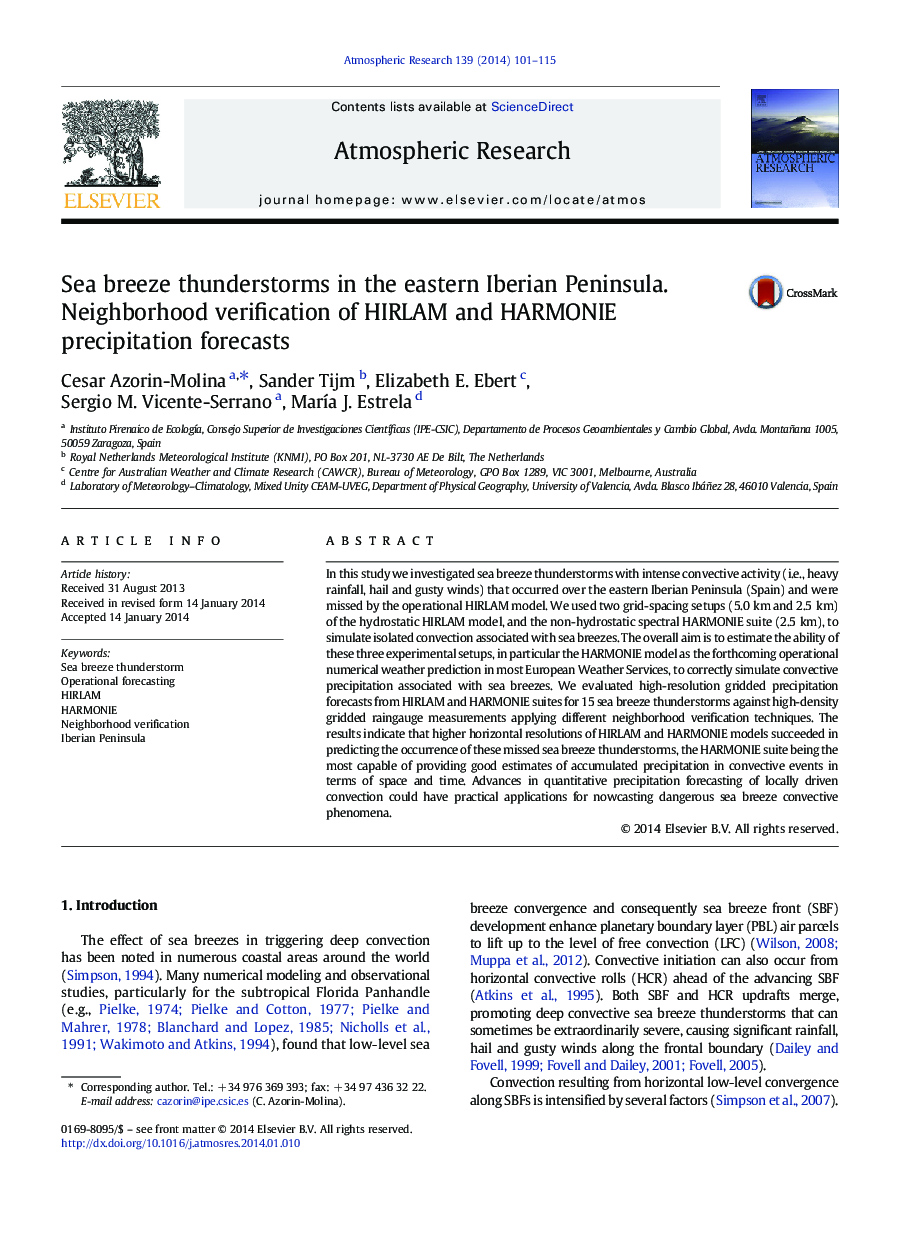| Article ID | Journal | Published Year | Pages | File Type |
|---|---|---|---|---|
| 4449959 | Atmospheric Research | 2014 | 15 Pages |
•We simulated 15 sea breeze thunderstorms that were operationally unforecasted.•We estimated the ability of HIRLAM and HARMONIE to simulate sea breeze convection.•More recent high resolution models succeeded in capturing convective showers.•Fuzzy metrics verified that HARMONIE provided the most accurate precipitation forecasts.
In this study we investigated sea breeze thunderstorms with intense convective activity (i.e., heavy rainfall, hail and gusty winds) that occurred over the eastern Iberian Peninsula (Spain) and were missed by the operational HIRLAM model. We used two grid-spacing setups (5.0 km and 2.5 km) of the hydrostatic HIRLAM model, and the non-hydrostatic spectral HARMONIE suite (2.5 km), to simulate isolated convection associated with sea breezes. The overall aim is to estimate the ability of these three experimental setups, in particular the HARMONIE model as the forthcoming operational numerical weather prediction in most European Weather Services, to correctly simulate convective precipitation associated with sea breezes. We evaluated high-resolution gridded precipitation forecasts from HIRLAM and HARMONIE suites for 15 sea breeze thunderstorms against high-density gridded raingauge measurements applying different neighborhood verification techniques. The results indicate that higher horizontal resolutions of HIRLAM and HARMONIE models succeeded in predicting the occurrence of these missed sea breeze thunderstorms, the HARMONIE suite being the most capable of providing good estimates of accumulated precipitation in convective events in terms of space and time. Advances in quantitative precipitation forecasting of locally driven convection could have practical applications for nowcasting dangerous sea breeze convective phenomena.
